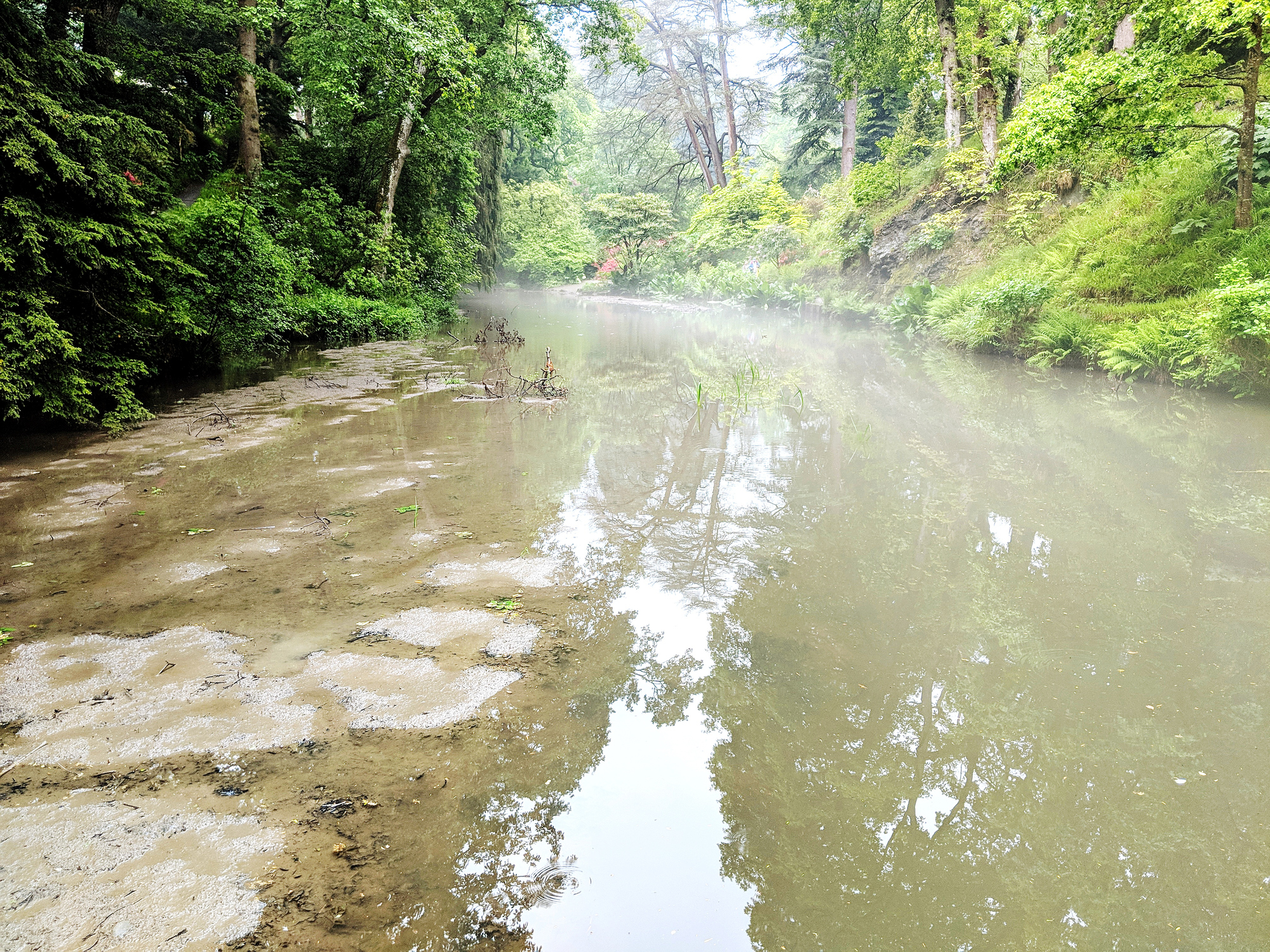John Lewis-Stempel: Glimmers of Nature's beauty, even amid a month-long downpour
After days of incessant January rain, the chicken paddock has turned into a quagmire, ghost ponds have resurfaced and a sheep has come close to drowning. But there's joy to be found even despite all that, says John Lewis-Stempel.


I cannot remember when it started to rain. I think it was the day before yesterday, but perhaps even the day before that. I do not imagine that it will ever stop. At night, the rain glugs continuously into the drain, which is not unmusical; but the metronomic drip from a leak in the gutter — or is it in the roof? — maddens.
Standing at the entrance to the barn at first light this morning, behind a sheet waterfall, the sparrows on the roof girder above me share the same blurry view. After some subdued communal chatter, they decide they will stay under cover and scavenge around inside. I have less choice. With a bale of straw on my shoulder, I venture once more into the rain.
The farm track is a chain of blank puddles staring at a blank sky; the gateway to the chicken paddock is a quagmire. Anywhere humans tread is churned to mud. I whip out a penknife and cut the twine around the bale, then distribute its golden tranches at the entrance to the three chicken arks. The straw is for wiping dirty feet, the same principle as the human doormat. For one moment, the straw carpet is perfect; but, by mid afternoon, the chickens in their to-and-fro-ing will have turned it sodden and brown and it will need replacing. A Sisyphean task with straw.
Out onto the lane, which is running an inch deep in tea-coloured water, to check the sheep. Head withdrawn into my cape tortoise-style, I almost bump into my neighbour Christopher, who is sloshing the other way. Like me, he is dressed in a pointy-hooded plastic cape, waterproof trousers and Wellingtons. We are two gaudy gnomes. On a day such as this, there is no desire to talk; we simply shake our heads in disbelief.
"When I found the little black sheep, her fleece was literally wringing wet"
Halfway up the lane; looking around at the valley is like looking at the world through tears. Or, less pityingly, it is to see the valley as it once was, in more watery times. Rain likes to find water’s old haunts. In the draughts-board of fields, it has gathered in definite circular depressions here and there — old farm ponds that have been ploughed under. Ghost ponds. The story of the rise and fall of the British pond has many villains, including intensive agriculture. After the Second World War, the intensification of agriculture led to the draining or filling in of the small wet places, the abode of moorhen and snipe, mallard and water rail. Modern machinery meant that a pond that had served as a watering hole for livestock for many centuries could become dry land in a matter of hours.
According to the landscape historian Oliver Rackham, the number of ponds of more than 20ft diameter in England and Wales in 1880 was about 800,000, or 14 ponds per square mile. Some 80% of these are now gone. For a moment, in the deluge of this January morning, the ponds are revived and so are the birds. Across in the neighbour’s wheat, a shallow pond has arisen and gathered around it are a small band of lapwings, the first I have seen for more than a year.
Rain may dampen human spirits, but the backs of the lapwings are polished iridescent and green by the same element and I see why some people still call Vanellus vanellus ‘green plover’. And then I wonder, did someone long ago see a green plover in a downpour and was similarly struck by the bird’s brilliant rain-cleaned hue? After all, plover is, via Anglo-Norman, from the Latin pluvia, ‘rain’.
Sign up for the Country Life Newsletter
Exquisite houses, the beauty of Nature, and how to get the most from your life, straight to your inbox.
At the top of the hill, next to the dripping wood, the sheep are strung out in a long single line under the lee of the hedge; the hedge thick and 10ft tall is a defensive wall to break the rain from the west. It is always the west.
Under the hedge, the sheep are dry and happy enough, although not as dry and happy as the ewe I rescued yesterday. The bank of the brook had given way, she had tumbled in, but managed to scramble out onto a perch on the far bank, where she lay cast and exhausted.
Usually, the brook is a toe-deep trickle barely deserving of the geographical signifier, brook. Yesterday, I had to wade sideways against the flow, canting my hip against the current to rescue her. Wool is remarkably rainproof stuff; each fibre has a waxy layer of overlapping cuticles that lie, like tiles on a roof, to repel water. A fleece can absorb 30% of its weight in water and retain its insulating properties. Yet even a fleece is unable to withstand near-drowning, then exposure to downpour without end.
When I found the little black sheep, her fleece was literally wringing wet; I needed to get her inside and dried off. The water had doubled her weight to about 60kg, a long, hard carry home. But so sodden was the field that access with a tractor would only result in a stuck tractor, or skid down the bank, into the brook. In the end, I pulled her home on a child’s plastic sledge; we skimmed along, effortlessly. In the barn, I towelled her down. It was not enough. So I stole the hair dryer of some unsuspecting family member and blow-dried the ewe’s fleece. She has revived and, this morning, was chewing hay happily. She seems to like her new bouffant hairstyle.
Twice crowned victor of the Wainwright Prize for Nature writing, for ‘Where Poppies Blow’ and ‘Meadowland’, John Lewis-Stempel’s latest book, ‘Nightwalking’, is out now (Doubleday, £9.99)
-
 Some of the finest landscapes in the North of England with a 12-bedroom home attached
Some of the finest landscapes in the North of England with a 12-bedroom home attachedUpper House in Derbyshire shows why the Kinder landscape was worth fighting for.
By James Fisher
-
 The Great Gatsby, pugs and the Mitford sisters: Country Life Quiz of the Day, April 16, 2025
The Great Gatsby, pugs and the Mitford sisters: Country Life Quiz of the Day, April 16, 2025Wednesday's quiz tests your knowledge on literature, National Parks and weird body parts.
By Rosie Paterson